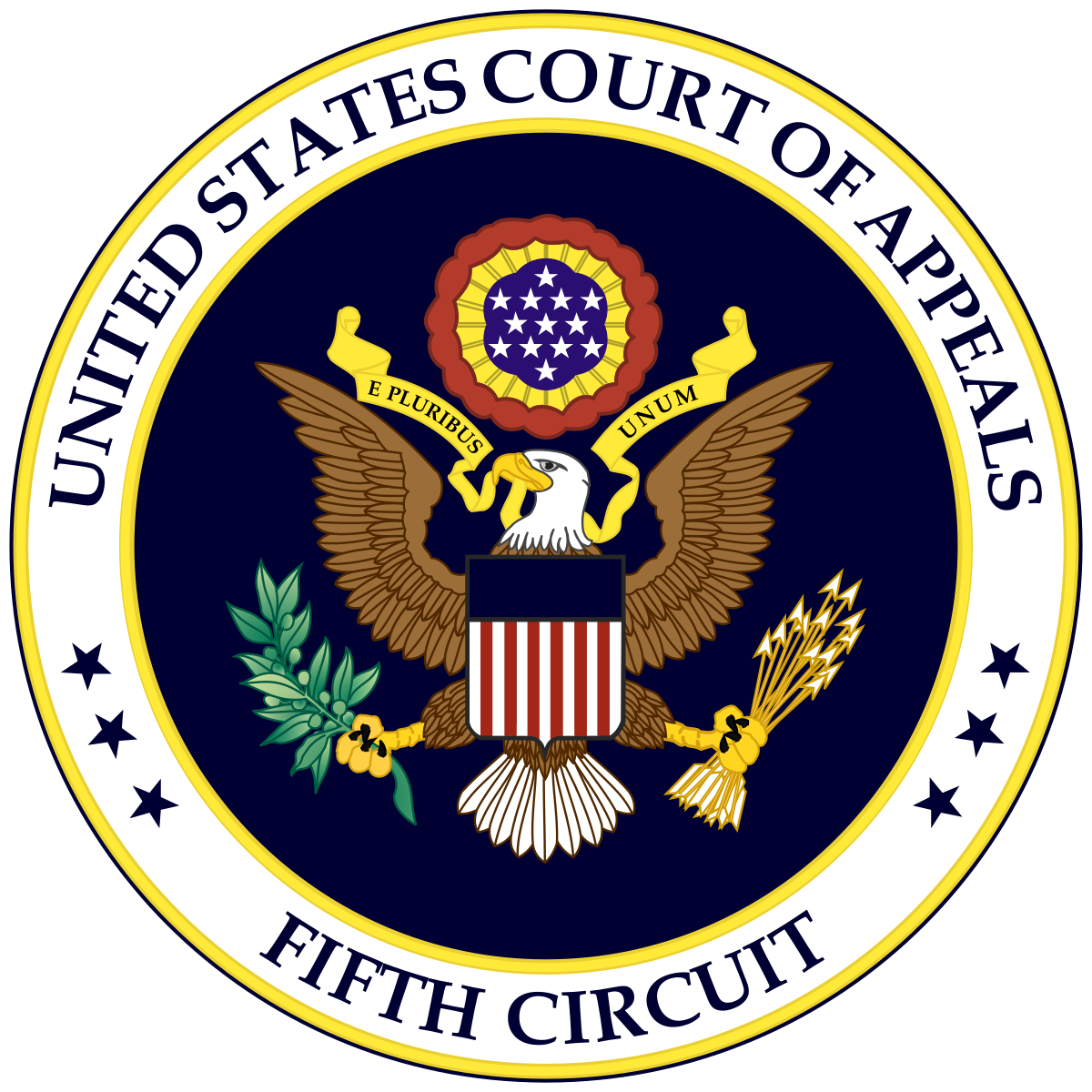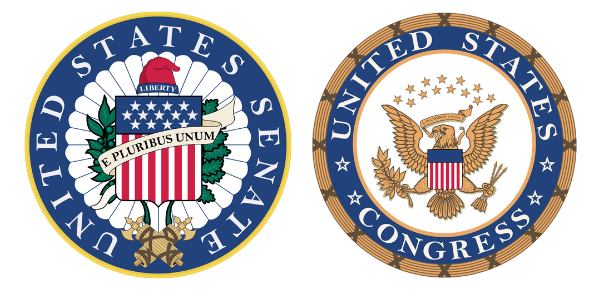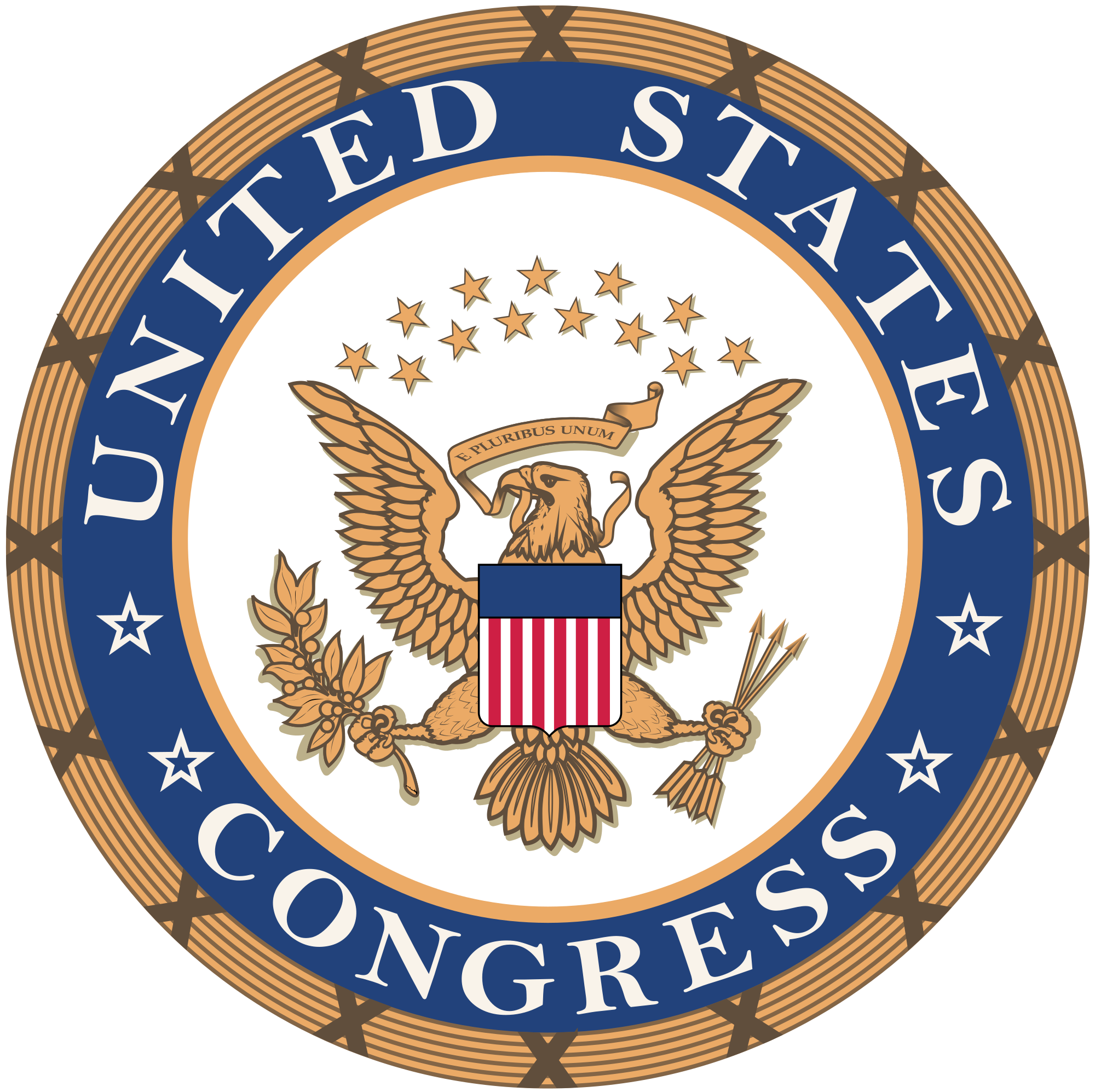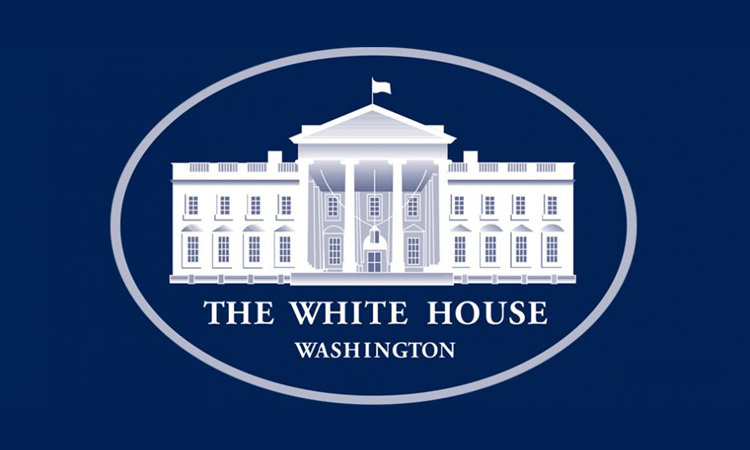
- U.S. IRS & Treasury Department Published Notice on Prevailing Wage & Apprenticeship Requirements for Enhanced Tax Benefits Under Inflation Reduction Act
- Fifth Circuit Court of Appeals Delivers Another Fatal Blow to Biden Administration’s COVID-19 Vaccine Mandate for Federal Contractors
- Latest DE Talk Podcast Provided Tips for Celebrating Holidays Inclusively at Work
- OFCCP Submitted to OMB Its Final Rule on “Pre-Enforcement Notice & Conciliation Procedures”
- Republican U.S. Senator Blocked Efforts for Unanimous Floor Vote to Confirm Gilbride (EEOC Counsel) & Looman (WHD Head) Nominations
- NY Gov. Hochul Finally Signs Bill Requiring “Salary Range” Disclosures in Job Ads
- How The New $1.7 Trillion Federal Budget Differentially Impacts Federal Labor & Employment Law Agencies
- Bipartisan FY 2023 Budget Law Included New Accommodations for Pregnant & Nursing Employees
- In Brief
- Looking Ahead: Upcoming Date Reminders
Dear Readers:
While you may have been away for the holidays, the WIR team was not. Rather, they have been writing and storing up the below stories over the last two weeks. It was actually quite an eventful end-of-year: 2022 went out with drama, surprises and with five stories deemed “important”!
Wednesday, November 30, 2022: U.S. IRS & Treasury Department Published Notice on Prevailing Wage & Apprenticeship Requirements for Enhanced Tax Benefits Under Inflation Reduction Act
U.S. DOL Wage & Hour Division Seeking Comments on Related Information Collection
The U.S. Internal Revenue Service (IRS) and the U.S. Department of the Treasury (DOT) published guidance for taxpayers on how to satisfy the prevailing wage and apprenticeship requirements for enhanced tax benefits available pursuant to the Inflation Reduction Act (IRA). President Biden signed the IRA into law on August 16, 2022. The IRA amended, among other things, the Internal Revenue Code of 1986 to allow specified taxpayers to qualify for the higher amount of certain clean energy tax credits for the construction of qualified facilities, property, projects, or equipment but only if they meet prevailing wage and registered apprenticeship requirements.
IRS Notice 2022-61 explains how taxpayers may receive the increased tax credits or deduction amounts by satisfying the wage and apprenticeship requirements as provided for in the notice. According to a press release the IRS issued the day before the Notice’s publication, corporate taxpayers which may be eligible for these tax credits generally include builders, developers, and owners of clean energy facilities. The Notice provides guidance on what constitutes a prevailing wage and the definition of qualified apprenticeships with accompanying examples.
The Notice publication date – November 30, 2022 – began the 60-day period in which taxpayers must begin construction of a facility (or installation under the rules for expensing energy-efficient commercial building property) to receive the enhanced tax benefits without satisfying the prevailing wage and apprenticeship requirements as described in the Notice.
For more information on the Notice, we recommend The Wagner Law Group’s blog here.
U.S. DOL Wage & Hour Division Seeking Comments on Related Information Collection
In a related development, on December 22, 2022, the U.S. Department of Labor’s Wage and Hour Division (WHD) published a two-page Federal Register Notice seeking public comments to the Office of Management and Budget {“OMB”) on a new Information Collection Requirement (ICR) assigned OMB Control Number 1235-0034. This new ICR would allow the WHD to collect the data needed to issue wage rates for the enhanced tax credit and deduction amounts under the IRA.
The WHD’s Supporting Statement for this proposed new ICR (submitted to OMB on December 1, 2022) explains that taxpayers will generally be able to find the applicable prevailing wage rates for the various classifications of laborers and mechanics for the construction of their facility in wage determinations published on www.sam.gov. However, if no applicable wage determination is available on www.sam.gov, or if the wage determination that applies to the taxpayer’s project does not include wage rates for all of the labor classifications that will be needed for the construction, alteration, or repair of the facility, the IRS/DOT Notice 2022-61 specifies a process by which a taxpayer may request a wage determination or wage rate from the WHD.
ICR for taxpayers subject to DBA & DBRA already approved. Taxpaying entities subject to the Davis-Bacon Act (DBA) and the Davis-Bacon Related Acts (DBRA) are included in the ICR approved under OMB Control Number 1235-0023. OMB most recently approved that ICR on July 15, 2022, through July 31, 2025. For more details on that ICR, see our story here.
New ICR for taxpayers NOT subject to DBA & DBRA which voluntarily pay prevailing wages. The IRA allows taxpayers to claim enhanced tax credit and deduction amounts in situations in which DBA prevailing wage rates are not required but are voluntarily paid as a condition of claiming the enhanced amount. The purpose of the new ICR – under OMB Control Number 1235-0034 – is to obtain approval to collect the data needed to issue wage rates for the universe of respondent companies which are not already included in the collection approved under 1235-0023 (covering those which are subject to the DBA and the DBRA).
The WHD’s Supporting Statement noted it created the new ICR rather than amending 1235-0023 “because 1235-0023 is currently encumbered by a separate action related to a [March 18, 2022 Notice of Proposed Rulemaking entitled “Updating the Davis-Bacon Act and Related Acts” (87 FR 15698)]. [Our story on that proposal is here.] Once the Rulemaking is finalized and USDOL has extended this ICR running the full Paperwork Reduction Act process, the Department will move to combine both ICRs under OMB Control Number 1235-0023.
Comments on the WHD’s proposed new ICR are due or before February 21, 2023. Comments must be identified by OMB Control Number 1235-0034. They must be submitted by either one of the following methods: Email: WHDPRAComments@dol.gov; Mail, Hand Delivery, Courier: Division of Regulations, Legislation, and Interpretation, Wage and Hour, U.S. Department of Labor, Room S-3502, 200 Constitution Avenue NW, Washington, DC 20210.
Monday, December 19, 2022: Fifth Circuit Court of Appeals Delivers Another Fatal Blow to Biden Administration’s COVID-19 Vaccine Mandate for Federal Contractors
“Piling On,” Illegal in Football, is Ok in the Courts
– Decision heralds the end of the COVID-19 vaccine mandates

However, the Court’s order has no additional operative effect given the Biden Administration’s current pause on imposing vaccination mandates on federal contractors (as previously discussed here), in light of other vaccination ban case decisions. This latest ruling is further evidence that the Administration will most likely never implement the mandate as to federal contractors as the courts continue their unrelenting swat downs of the President’s many different vaccine mandates.
The other noteworthy development is yet another federal court’s narrow reading of the extremely limited power the President has available to him to act pursuant to the Federal Property and Administrative Services Act (the “Procurement Act”) …by the way, the (only) claimed source of Presidential power to implement Executive Order 11246 (which OFCCP enforces). The White House has been playing high-stakes poker with the federal Procurement Act by claiming that it authorized the President power to mandate vaccinations of federal government contract employees—a claim every court has rejected. That is significant to federal contractors more generally given that the Procurement Act is the only source of legal authority OFCCP recites in support of its authority to proceed pursuant to Executive Order 11246, OFCCP’s primary enforcement “statute.” The collateral impact on OFCCP is that the vaccine litigation has now created ‘bad” case law for proponents of Executive Order 11246 “affirmative action.” The vaccine litigations have now ripped back the bandage and have exposed the judiciary’s widespread view of the very narrow purpose and reach of the modest little federal Procurement Act passed into law only to permit the President to buy goods and services for the federal Executive Branch of the government…and not much else.
The Fifth Circuit’s ruling, prohibiting implementation of the vaccine mandate as to federal contractors, rested on the following reasoning:
- The Biden Administration’s Executive Order seeking to impose the vaccination mandate exceeded presidential authority under the federal “Procurement Act.” The Court held allowing issuance of the mandate would result in an “enormous and transformative expansion” in presidential power unwarranted under the Procurement Act since the mandate was “neither a straight-forward nor predictable example of procurement regulations authorized by Congress to promote ‘economy and efficiency.’”
- Based on the effect such expansive authority would have on the plaintiffs, the Court determined plaintiffs had carried their burden to show irreparable harm justifying imposition of a preliminary injunction.
- Finally, the Court found that the effect of the claimed harm clearly outweighed the Government’s stated public interest to prevent productivity losses among employees of federal contractors given that there is no public interest in the perpetuation of unlawful agency action.
The Court’s decision falls in line with earlier judicial decisions enjoining implementation of the federal contractor vaccine mandate. With this decision, it now brings to 25 the number of states in which the mandate is enjoined by federal court order. Readers may recall that the United States Court of Appeals for the Eleventh Circuit (Atlanta) upheld an injunction against the federal contractor mandate in seven states (while overturning the nationwide injunction the lower court had imposed). Additionally, the U.S. Court of Appeals for the Sixth Circuit (Cincinnati) affirmed an injunction precluding enforcement of the federal contractor mandate in Kentucky, Ohio, and Tennessee (discussed here). Several U.S. District Courts, including in Missouri and Arizona, also issued injunctions that applied to the remaining states that account for the total of 25 states where federal courts have stopped the mandate. All these decisions resulted in the Biden Administration’s October 14, 2022 decision to pause implementation of the federal contractor vaccination mandate even in those states where the President had NOT been sued, let alone enjoined, from enforcing the mandate.
Recent developments and the public’s “pandemic fatigue” has made it apparent that other than the U.S. Supreme Court’s affirmation of the vaccine mandate as to healthcare workers receiving Medicare and/or Medicaid reimbursements, none of the Biden Administration’s regulations imposing vaccination requirements will survive. For example, with the signing of the omnibus spending bill for 2023, the federal government has now entirely eliminated the vaccination requirement for U.S. active duty military personnel.
Thus, the news coming forward now appears to spell the end of the federal government’s ill-fated adventure seeking to impose vaccination requirements. In that collision of “individual rights” vs “federal restrictions,” freedom won.
Tuesday, December 20, 2022: Latest DE Talk Podcast Provided Tips for Celebrating Holidays Inclusively at Work
In case you missed it prior to the close of the 2022 holiday season, the latest DE Talk Podcast can still provide employers with a proactive opportunity to make appropriate plans for 2023!
How your organization celebrates holidays at work impacts your culture and employee experience. When you recognize your employees’ backgrounds, you help create a culture of belonging, whereas ignoring your employees’ identities may lead to disengagement and increased turnover. Tune in as DirectEmployers’ Candee Chambers and Mikey Meagher share practical tips and guidance on how to show employees you value differences and welcome them to bring their whole selves to work – holiday celebrations and all. Click here to listen now!
Listen to our DE Talk Podcast via any of the options below and subscribe to receive updates whenever a new podcast is available.
Apple • Spotify • Google • Stitcher • iHeartRadio • Stitcher • TuneIn • Overcast • Pocket Casts• Castro • Castbox • Podchaser • RSS Feed
…or your preferred Podcast provider
Wednesday, December 21, 2022: OFCCP Submitted to OMB Its Final Rule on “Pre-Enforcement Notice & Conciliation Procedures”

On March 22, 2022, OFCCP published its proposed version of the Rule in the Federal Register. The comment period ended on April 21, 2022. OMB received twelve comments on the Notice of Proposed Rulemaking (NPRM). The agency cited 41 CFR §§60-1, 2, 4, 20, 30, 40, 50, 300, & 741 as the regulatory authority for this Rule. Shortly after its publication, John Fox discussed the NPRM in a bonus blog, “OFCCP’s Proposed NPRM Walks Backwards Promising Less Transparency in Audits and Unknown, But Different (to come), Evidentiary Standards in Discrimination Investigations.”
As per the usual process, the Final Rule will not be published unless and until the OMB approves it. In our June Report on the Spring 2022 Regulatory Agenda, we noted that OFCCP slated May 2023 for publication of its Final Rule. While the OMB generally has 90 days to complete its review of each submission, there is no minimum period for review, and the review period may be extended. Therefore, depending on how long OMB takes to review, this Final Rule could very well come out prior to May 2023.
Wednesday, December 21, 2023: Republican U.S. Senator Blocked Efforts for Unanimous Floor Vote to Confirm Gilbride (EEOC Counsel) & Looman (WHD Head) Nominations
Nomination of Kalpana Kotagal for EEOC Commissioner Stalled Since May

How We Got There: Senator Mike Braun (R-IN) blocked efforts on the U.S. Senate floor to unanimously confirm both Karla Gilbride for Equal Employment Opportunity Commission General Counsel and Jessica Looman to head the Labor Department’s Wage and Hour Division. On November 29, 2022, the Senate Health, Education, Labor, and Pensions (HELP) Committee had reported favorably on both nominations and had sent them to the Senate for a full Senate Floor vote.
Meanwhile, the Senate took no further action on the nomination of Kalpana Kotagal for EEOC Commissioner since May 25, 2022, when the Senate HELP Committee failed to report favorably on her nomination following a May 10 Committee hearing. President Biden nominated Ms. Kotagal on April 5, 2022, to replace Janet Dhillon on the Commission. In September, we reported that Ms. Kotagal’s nomination is a “Political Rugby Scrum in Progress” with the Commission majority at stake. With EEOC Commissioner Dhillon’s resignation from the Commission in early December, 2022 (which we reported here), the five Member bi-partisan Committee is now evenly staffed with 2 Democrats and 2 Republicans.
The deadlock which existed at the Commission since the Biden Administration took office now continues. The President’s travails at confirming his third EEOC nominee (necessary for the President to gain political control of the Commission) shows the power of Republicans in the 117th Congress to both stall and block Presidential nominations in the U.S. Senate, even though nominees need only 50 votes to be confirmed (since Vice President Kamala Harris may cast a tie-breaker vote when the Senate is deadlocked 50-50). Republican power in the Senate will reduce somewhat in the 118th Congress, of course, since Democrats picked up one more Senate seat in the November 2022 mid-term elections making the headcount in the 118th Congress look like this: 48 Democrats. 3 Independents (which caucus with the Democrats) vs 49 Republicans. The new realigned Senate will allow the President in the 118th Congress to have to convince one fewer Democrat that his nominee is worthy of confirmation.
Now that the President’s nominations of Ms. Gilbride, Ms. Looman and Ms. Kotagal have all timed out (because not confirmed before the 117th Congress adjourned) President Biden will have to either renominate them in the 118th Congress for their respective positions or nominate new candidates. Either way, the candidates the President nominates will have to appear for a Senate H.E.L.P. Committee Hearing. If the candidate then wins eight of the 15 votes on the coming eight-Democrat and seven-Republican Committee, the candidate will then advance to a full Senate Floor vote. If the candidate fails to advance from the H.E.L.P. Committee, the President must then pick another candidate or allow the position to sit fallow without an incumbent (as President Trump did with respect to almost half of his political appointee positions given the difficulty of advancing nominees in a nearly evenly divided Senate).
Wednesday, December 21, 2022: NY Gov. Hochul Finally Signs Bill Requiring “Salary Range” Disclosures in Job Ads
Implementation delayed 10 months

However, sustained political pressure from New York state employers seeking modifications to the bill delayed the Governor as her administration worked behind the scenes to iron out the major concerns of the employer community…but ultimately to no avail. Finally, on the Wednesday before Christmas, Governor Hochul provided an early Christmas present to applicants for jobs and promotions/transfers in New York by finally signing the legislation and instituting pay range requirements in job advertisements throughout the state.
The law states that it is not slated to go into effect until September 17, 2023. This delayed implementation will allow the NY state Department of Labor to draft and finalize formal Rules to implement the law.
The law impacts New York state employers with four or more employees. Covered employers must disclose either the actual salary, the minimum and maximum salary offered, or the hourly wage the employer believes in good faith to be accurate in any advertised job, promotion, or transfer opportunity that can or will be performed, at least in part, within the state of New York. For positions paid solely on commission, compliance requires only a disclosure in the advertisement that compensation is based on commission.
Aggrieved individuals reporting a violation may file a complaint with the NY state Department of Labor. Potential liabilities employers face for violating the law include actual economic loss, reasonable costs and attorneys’ fees, prejudgment interest, potential liquidated damages, and civil penalties.
The NY state Department of Labor cannot, of course, write on a blank slate by expanding or restricting the legislative intent embedded in the statute. Nor may the Department of Labor fill in any issue “gaps” about which the Legislature was unable to arrive at a consensus to pass into law. Rather, the NY state Department of Labor is obligated to merely add details to decisions legislators made and baked into the statute. Some outstanding issues include whether:
- out-of-state employees count toward the four-employee jurisdictional limit?
- the term “compensation range,” as used in the statute, includes a requirement to provide benefits information or information related to other compensation?
- remote work that an individual could perform in New York is subject to the law?
However, as a matter of administrative law, all the above issues should have been specifically addressed in the statute to make it enforceable and not something the NY state Department of Labor was left to exercise its discretion to “decide.” These issues, at least, are material elements necessitating the decision-making of the Legislature and their inclusion in the statute. The NY state Department of Labor cannot write itself a “blank check.” Rather, it is supposed to be merely “cashing the Legislature’s check” (i.e., dutifully and faithfully carrying out the Legislature’s intent and not adding to that intent). Remember, the Department of Labor is not the legislative body. Rather, the NY state Department of Labor is merely an executive branch agency responsible to the Governor. The Department’s job as to S9427a is to merely supply the details, via “implementing” Rules, to allow it to enforce the legislative intent.
As a result, the state has now left itself open to legal challenges by employers that the NY state Department of Labor exceeded its mandate to merely “implement” the Legislature’s given intent (and not to “make law”). Alternatively, the Legislature has opened the door to employers to choose to interpret the statute as written, and therefore comply on their own terms as to the “open issues” the Legislature left unaddressed.
Employers already complying with New York City’s salary transparency law may consider this “old hat” as they become accustomed to dealing with that large municipality’s similar law. That would be especially true if the NY state Department of Labor were to adopt Rules similar to those New York City’s Commission on Human Rights adopted as to New York City’s salary transparency requirements. Fortunately, with the delay until next September of the state of New York’s law, employers advertising jobs in New York state should have ample time to prepare themselves to comply with what is now the country’s 14th “pay range” law…and assuming the state soon proposes its “implementing” Rules and does not squander the coming 10-month “implementation runway.”
Thursday, December 29, 2022: How The New $1.7 Trillion Federal Budget Differentially Impacts Federal Labor & Employment Law Agencies
What it means for federal labor agencies
OFCCP received modest “steady-state” 4.72% increase while OSHA and WHD received more

Division H, Title I of the legislation lists the appropriations for the U.S. Departments of Labor (DOL) and its agencies, and Division H, Title IV contains the allocation for the National Labor Relations Board (NLRB). Division B, Title IV of the law contains the budget allocation for the Equal Employment Opportunity Commission (EEOC).
IT Modernization
The DOL budget contains a separate line item and justification section (p. 390 of the law) for “IT Modernization.” This item provides “[f]or necessary expenses for Department of Labor centralized infrastructure technology investment activities related to support systems and modernization, $34,269,000, which shall be available through September 30, 2024.” The DOL had requested $47,969,000.
Specific Allocations
The list below details the numbers allocated in the FY 2023 appropriations law, the respective Congressional Budget Justifications (CBJs), and the FY 2022 Continuing Resolution (CR) amounts. Links for each respective CBJ are embedded. The percentage increase numbers are rounded up or down to the nearest two decimal points. “FTEs” stands for full-time equivalent employees.
OFCCP: FY 2023 allocation is $110,976,000; percentage increase from FY 2022 CR is 4.72%
The OFCCP’s FY 2023 budget allocation is $110,976,000 (p. 384 of the law). The agency’s CBJ requested $147,051,000 (628 FTEs).
Its FY 2022 annualized CR budget level was $105,976 (420 FTEs) (p. 2 of the CBJ). The difference between the FY 2022 CR and the FY 2023 budget law is $5,000,000.
The percentage increase (from FY 2022 CR to FY 2023 budget law) is 4.72 percent. This disappointing “steady-state” budget is designed to keep OFCCP operating at about its current 420 employee headcount authorization. No growth, but no shrinkage, either.
EEOC: FY 2023 allocation is $455,000,000; percentage increase from FY 2022 CR is 12.49%
For the Equal Employment Opportunity Commission (EEOC), the budget allocation is $455,000,000 (p. 94 of the law). The agency requested $464,650,000 (2,145 FTEs) in its CBJ.
The FY 2022 annualized CR budget level was $404,490,000 (2,070 FTEs) (Table 1 of EEOC’s CBJ). The difference between the FY 2022 CR and the FY 2023 budget law is $50,510,000.
The percentage increase (from FY 2022 CR to FY 2023 budget statute) is 12.49 percent.
NLRB: FY 2023 allocation is $299.224,000; percentage increase from FY 2022 CR is 9.12%
The National Labor Relations Board’s allocation is $299,224,000 (p. 445 of the law). The Board requested $319,424,000 (1,305 FTEs) in its CBJ.
The FY 2022 annualized CR budget level was $274,224,000 (1,215 FTEs), which continued the level of funding in place for the Agency since 2014. (p. 27 of the CBJ). The difference between the FY 2022 CR and the finalized FY 2023 budget is $25,000,000.
The percentage increase (from FY 2022 CR to FY 2023 budget statute) is 9.12 percent.
Other DOL Agencies
BLS: FY 2023 allocation is $629,952,000; percentage increase from FY 2022 CR is 7.32%
For the Bureau of Labor Statistics (BLS), the FY 2023 allocation is $629,952,000 (p. 387 of the statute). In its CBJ, the BLS requested $673,744,000 (2,094 FTEs).
The FY 2022 annualized CR budget level was $587,000,000 (1,965 FTEs) (p. 2 of the CBJ). The difference between the FY 2022 CR and the FY 2023 budget law is $42,952,000.
The percentage increase (from FY 2022 CR to FY 2023 budget measure) is 7.32 percent.
ETA: FY 2023 allocation is $4,140,911,000; percentage increase from FY 2022 CR is 13.04%
The Employment Training Administration (ETA) allocation is $4,140,911,000 (p. 376 of the law). The ETA requested $4,410,999,000 (0 FTEs).
The FY 2022 annualized CR budget level was $3,663,200,000 (0 FTEs) (p. 14 of its CBJ). The difference between the FY 2022 CR and the FY 2023 budget allocation is $477,711,000.
The percentage increase (from FY 2022 CR to FY 2023 budget law) is 13.04 percent.
ODEP: FY 2023 allocation is $43,000,000; percentage increase from FY 2022 CR is 11.69%
For the Office of Disability Employment Policy (ODEP), the allocation is $43,000,000 (p. 388 of the law). In its CBJ, ODEP requested $58,566,000 (58 FTEs).
The FY 2022 annualized CR budget level was $38,500 (56 FTEs) (p. 2 of the CBJ). The difference between the FY 2022 CR and the FY 2023 budget measure is $4,500,000.
The percentage increase (from FY 2022 CR to FY 2023 budget law) is 11.69 percent.
OLMS: FY 2023 allocation is $48,515,000; percentage increase from FY 2022 CR is 9.18%
The Office of Labor-Management Standards allocation is $48,515,000 (p. 383 of the law). The agency requested $49,951,000 (204 FTEs).
The FY 2022 annualized CR budget level was $44,437,000 (187 FTEs) (p. 5 of the CBJ). The difference between the FY 2022 CR and the finalized FY 2023 budget is $4,078,000.
The percentage increase (from FY 2022 CR to FY 2023 budget law) is 9.18 percent.
OSHA: FY 2023 allocation is $632,309,000; percentage increase from FY 2022 CR is 6.85%
For the Occupational Safety and Health Administration (OSHA), the allocation is $632,309,000 (p. 386 of the law). In its CBJ, OSHA requested $701,405,000 (2,346 FTEs).
The FY 2022 annualized CR budget level was $591,787,000 (1,853 FTEs) (p. 5 of the CBJ), The difference between the FY 2022 CR and the finalized FY 2023 budget is $40,522,000.
The percentage increase (from FY 2022 CR to FY 2023 budget statute) is 6.85 percent.
VETS: FY 2023 allocation (total) is $335,507,000; percentage increase from FY 2022 CR is 6.00%
General Funds and Trust Funds & Fees combined
The Veterans Employment and Training Service (VETS) allocation (p. 389 of the law) is $335,507,000 in total (combining the General Funds, Unemployment Trust Fund, and fees amounts). VETS requested $331,134,000 in total.
The FY 2022 annualized continuing resolution (CR) budget level was $316,507,000. The difference between the FY 2022 CR and the FY 2023 budget measure is $19,000,000.
The percentage increase (from FY 2022 CR to FY 2023 budget law) is 6.00 percent.
The calculations for the above combined totals are:
FY 2023 Request: $268,468,000 (trust funds) plus $62,500,000 (general funds) = 330,968,000 plus 166,000 in fees = $331,134,000 Total
FY 2022 CR level: $258,841 (trust funds) plus $57,500 (general funds) = $316,341 plus 166,000 in fees = $316,507,000 Total
Finalized 2023 budget: $269,841,000 (trust fund) plus $65,500,000 (general funds) = 335,341,000 plus 166,000 in fees = $335,507,000 Total
WHD: FY 2023 allocation is $260,000,000; percentage increase from FY 2022 CR is 5.69%
For the Wage and Hour Division (WHD), the allocation is $260,000,000 (p. 383 of the measure). The agency requested $307,678,000 (1,556 FTEs).
The FY 2022 annualized CR budget level was $246,000,000 (1,267 FTEs) (p. 2 of the CBJ). The difference between the FY 2022 CR and the finalized FY 2023 budget is $14,000,000.
The percentage increase (from FY 2022 CR to FY 2023 budget statute) is 5.69 percent.
Thursday, December 29, 2022: Bipartisan FY 2023 Budget Law Included New Accommodations for Pregnant & Nursing Employees

Pregnant Workers Fairness Act
Division II of the legislation contains the PWFA, which incorporates various provisions of Title VII of the Civil Rights Act of 1964 (Title VII) and Title I of the Americans With Disabilities Act of 1990 (ADA). The Equal Employment Opportunity Commission (EEOC) will enforce the PWFA. Commission Chair Charlotte Burrows tweeted about the measure on December 23 after the House of Representatives voted to send the finalized budget bill to President Biden.
The PWFA is closely modeled after the ADA and for the first time requires accommodations for pregnant employees due solely to their pregnancy unrelated to an underlying medical condition. The PWFA requires employers with 15 or more employees to provide reasonable accommodations unless it would pose an undue hardship to the employer. The legislation includes protections not already codified in the ADA or the Pregnancy Discrimination Act of 1978 (PDA). Specifically, the PWFA allows pregnant employees to continue working by requiring employers to provide accommodations such as additional bathroom breaks, light duty, or a stool to sit on if an employee stands all day. The measure also prohibits employers from denying employment opportunities to women based on their need for reasonable accommodations due to childbirth or related medical conditions. Moreover, Section 106 of the measure provides that State employers do not have Eleventh Amendment immunity from its provisions.
For private-sector employees, the remedies are the same as those under Title VII, including reinstatement, back pay, front pay, compensatory damages, punitive damages, and reasonable attorneys’ fees and costs. For public-sector employees, the remedies are similar to those the Congressional Accountability Act provides, Title V of the United States Code, and the Government Employee Rights Act of 1991.
The PWFA will take effect 180 days after the overall budget bill’s enactment date (i.e., 180 days after December 29, 2022 = June 27, 2023). Oddly, the EEOC is not required to issue Rules to implement the PWFA until AFTER the statute becomes legally effective: i.e., no later than one year after enactment of the budget = December 29, 2023.
PUMP for Nursing Mothers Act
Division KK of the bill contains the PUMP Act, which amended the Fair Labor Standards Act (FLSA) to require employers to provide breastfeeding accommodations in the workplace. Specifically, it requires a private location other than a bathroom and the necessary, reasonable break time for one year following the birth of a child. It expands on a 2010 amendment to the FLSA, which required employers to provide these accommodations to non-exempt nursing employees. The new law expands these rights to salaried employees.
The Act contains several exemptions, including those for employers with fewer than 50 employees if compliance would impose an undue hardship, and specific exemptions for crewmembers of air carriers, train crews of rail carriers, and certain motorcoach services.
Most of the provisions of the PUMP Act took effect on its enactment date. However, certain remedy provisions will not take effect until 120 days after the enactment date (i.e., April 27, 2023).
In Brief
Friday, December 23, 2022: President Biden Issued an Executive Order Raising Pay for Federal Employees an Average of 4.6%

The 4.6 percent raise is an increase over the 2.7 percent average pay boost federal workers received in 2022. It also marks the largest pay increase for federal workers since 2002, when the George W. Bush administration provided them with the same percentage increase, according to an article in Government Executive.
Thursday, December 29, 2022: U.S. EEOC Published Notice of January 31 Public Meeting on Artificial Intelligence

Thursday, December 29, 2022: U.S. Advisory Committee on Veterans’ Employment, Training & Employer Outreach Published Notice of January 25 Public Meeting

There will also be an opportunity for individuals or organizations to address the Committee. In a Federal Register notice announcing the meeting, ACVETEO provided instructions about the procedures for those attending the meeting in a Federal Register notice announcing it. The meeting will take place in Washington, D.C. (the specific address is included in the notice) and is scheduled to run from 9 a.m. to approximately 4 p.m. (EDT). Topics slated for discussion include: (1) Fiscal Year 2023 DOL/VETS priorities; (2) a briefing on the VETS Data Integrity Project; and (3) a briefing on the DOL’s Office of Disability Employment Policy.
Looking Ahead:
Upcoming Date Reminders
Monday, January 9, 2023: Comments due on US EEOC proposal to eliminate counting employees to determine filing “type” for EEO-1 Survey Component 1 – https://www.regulations.gov/document/EEOC-2022-0005-0001
Tuesday, January 17, 2023: Comments due on OFCCP’s Proposed Changes to Disability Self-Identification Form to Update Preferred Language for Specific Disabilities – https://www.regulations.gov/commenton/OFCCP-2022-0003-0004
Friday, January 20, 2023: Deadline to submit comments on OFCCP’s Proposed Changes to Its Supply & Service Contractor ICRs, Including Use of Portal to Submit Revised Scheduling Letter & Revised Itemized Listing Responses – https://www.regulations.gov/commenton/OFCCP-2022-0004-0001
Thursday, February 2, 2022: Deadline to submit initial comments on NLRB’s proposed changes to NLRA regulations (previous January 3 deadline extended) – https://www.regulations.gov/commenton/NLRB-2022-0002-0001
Thursday, February 16, 2022: Deadline to submit reply comments in response to initial comments on NLRB’s proposed changes to NLRA regulations (previous January 17 deadline extended) – https://www.regulations.gov/commenton/NLRB-2022-0002-0001
Wednesday, April 12 – Friday, April 14, 2023: DEAMcon23 Chicago (Registrations open now; Agenda now available here!)
THIS COLUMN IS MEANT TO ASSIST IN A GENERAL UNDERSTANDING OF THE CURRENT LAW AND PRACTICE RELATING TO OFCCP. IT IS NOT TO BE REGARDED AS LEGAL ADVICE. COMPANIES OR INDIVIDUALS WITH PARTICULAR QUESTIONS SHOULD SEEK ADVICE OF COUNSEL.
SUBSCRIBE.
Compliance Alerts
Compliance Tips
Week In Review (WIR)
Subscribe to receive alerts, news and updates on all things related to OFCCP compliance as it applies to federal contractors.
OFCCP Compliance Text Alerts
Get OFCCP compliance alerts on your cell phone. Text the word compliance to 55678 and confirm your subscription. Provider message and data rates may apply.



